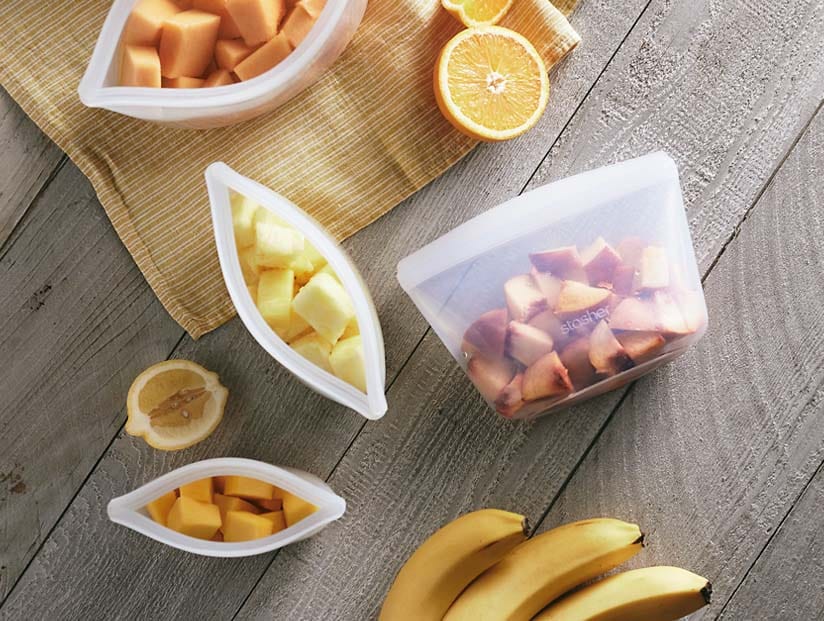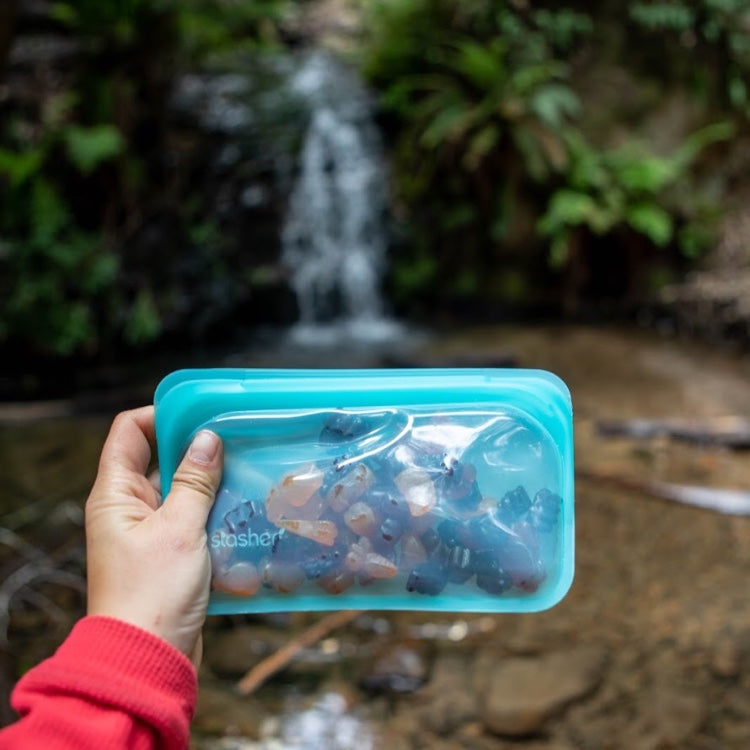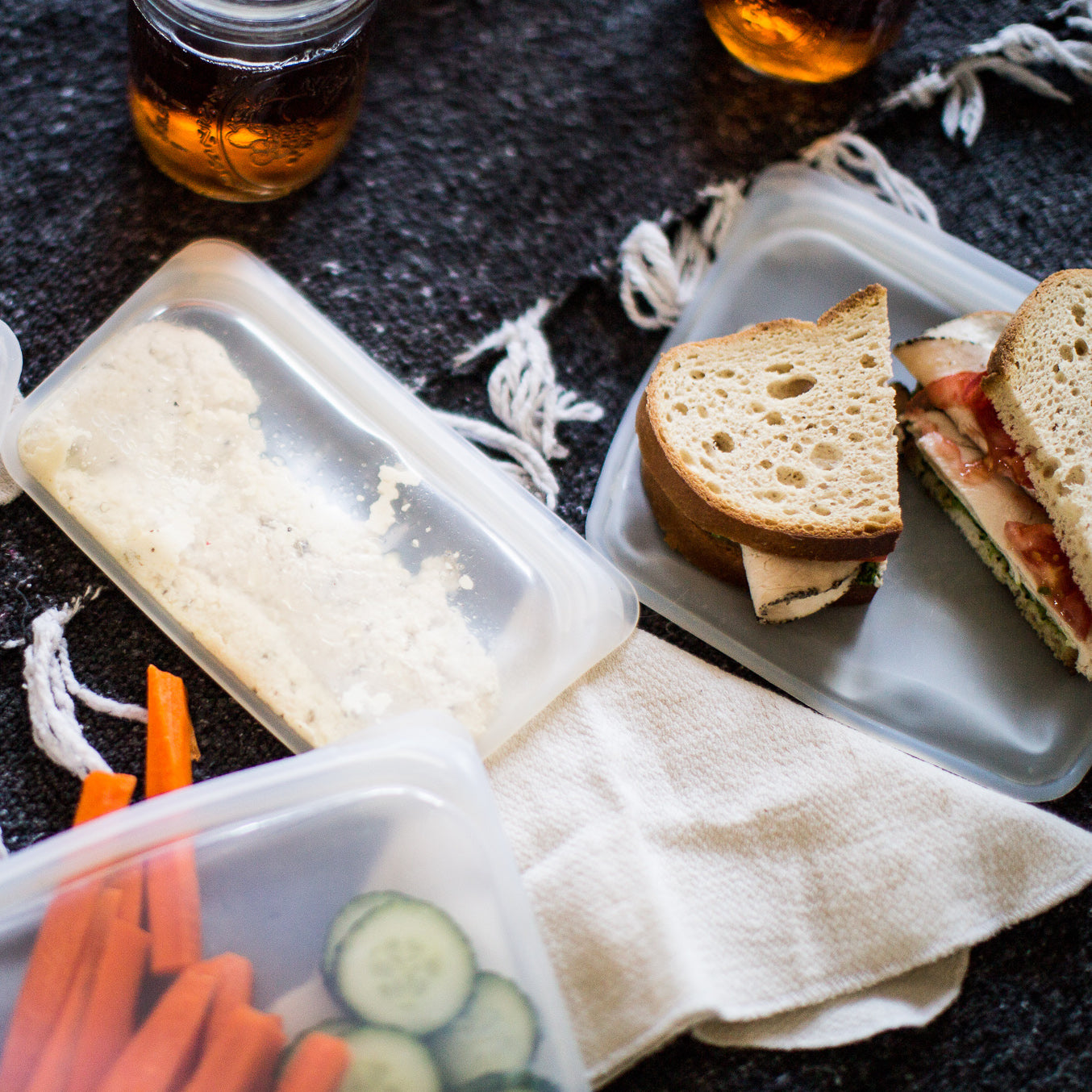Have a Sustainable Day at the Beach
The last time you were at the beach, did you see any trash? A plastic bag floating in the waves, a cigarette butt or two in the sand? Every year, 8 million metric tons of plastic end up in our oceans- that’s about a garbage truck full of plastic bags, food packaging, and Styrofoam every day, and studies suggest that number could double in the next 7 years. Many beaches around the world have become completely choked with trash, and enormous trash “islands” are floating in the ocean. The Great Pacific Garbage Patch, a trash island between Hawaii and California, has grown to be twice the size of the state of Texas!
Even when single-use plastic is properly disposed of in a landfill, it can still find its way into waterways and ultimately into the ocean. Recycling is better at ensuring plastic and other trash stays out of the ocean, but very little trash is currently being recycled (about 9%).
The impact of the plastic in our oceans on marine life is devastating. It’s estimated that 700 different marine species may face extinction as a result of the trash entering their environment. Marine animals often become entangled in or ingest plastic.
Want to reduce your plastic trash and take steps toward sustainability on your next beach trip?
Bring Reusables
Bring reusable containers to the beach instead of packing food and other items in single-use plastic. A bamboo or steel straw makes a great alternative to plastic straws, and food can be transported in your favorite set of stasher bags. Stasher bags can also be used to store valuables and things that you need to keep sand-and-splash free: you can even place your phone inside a snack size stasher bag- the touchscreen will work through the bag and you won’t have to worry about putting your phone in a plastic case or using the “two baggie” technique with disposable plastic bags.
Use a Reef-Safe Sunscreen
Plastic isn’t the only substance entering the ocean and causing harm- chemicals from sunscreen can pollute the water and harm fish and coral. The state of Hawaii just placed a ban on sunscreens containing harmful substances, but it’s up to conscious beach goers to protect the coral reefs in other destinations! Steer clear of sunscreens containing the common ingredients oxybenzone and octinoxate, and look for a mineral sunscreen with zinc oxide and titanium dioxide as active ingredients. Not only will a reef-safe sunscreen protect ocean wildlife, it’s better for your skin, too!
Environmental Working Group also has a comprehensive guide to sunscreens that will help you make the right purchase.
Clean It Up
In addition to not creating any trash of your own, pick up trash that you see on the beach and dispose of it properly! Use your beach moment to educate others on the importance of reducing plastic waste by joining a beach cleanup awareness like #takethreeforthesea or #5minutebeachcleanup and posting your mini trash haul on social media. One small action could be the key to more people becoming aware of the scope of our oceans’ plastic problem.

Tread lightly
A good rule of thumb for any outdoor adventure is to “take nothing, leave nothing”. Picking up and bringing home shells or even a beach creature like a hermit crab might seem harmless, but can actually have a negative effect on beach ecosystems over time. At one beach in Spain, the amount of shells on one popular beach has declined by 60 percent. Researchers worry that disturbing nature in this way can cause an imbalance in the wildlife found nearby the ocean shores. Enjoy the beach, take lots of photos, but leave it undisturbed for others to enjoy as well.
This post was written by our friend Hannah Theisen, editor of life+style+justice, founder of A Beautiful Refuge and a member of the ethical blogger network. Connect with Hannah on instagram.









